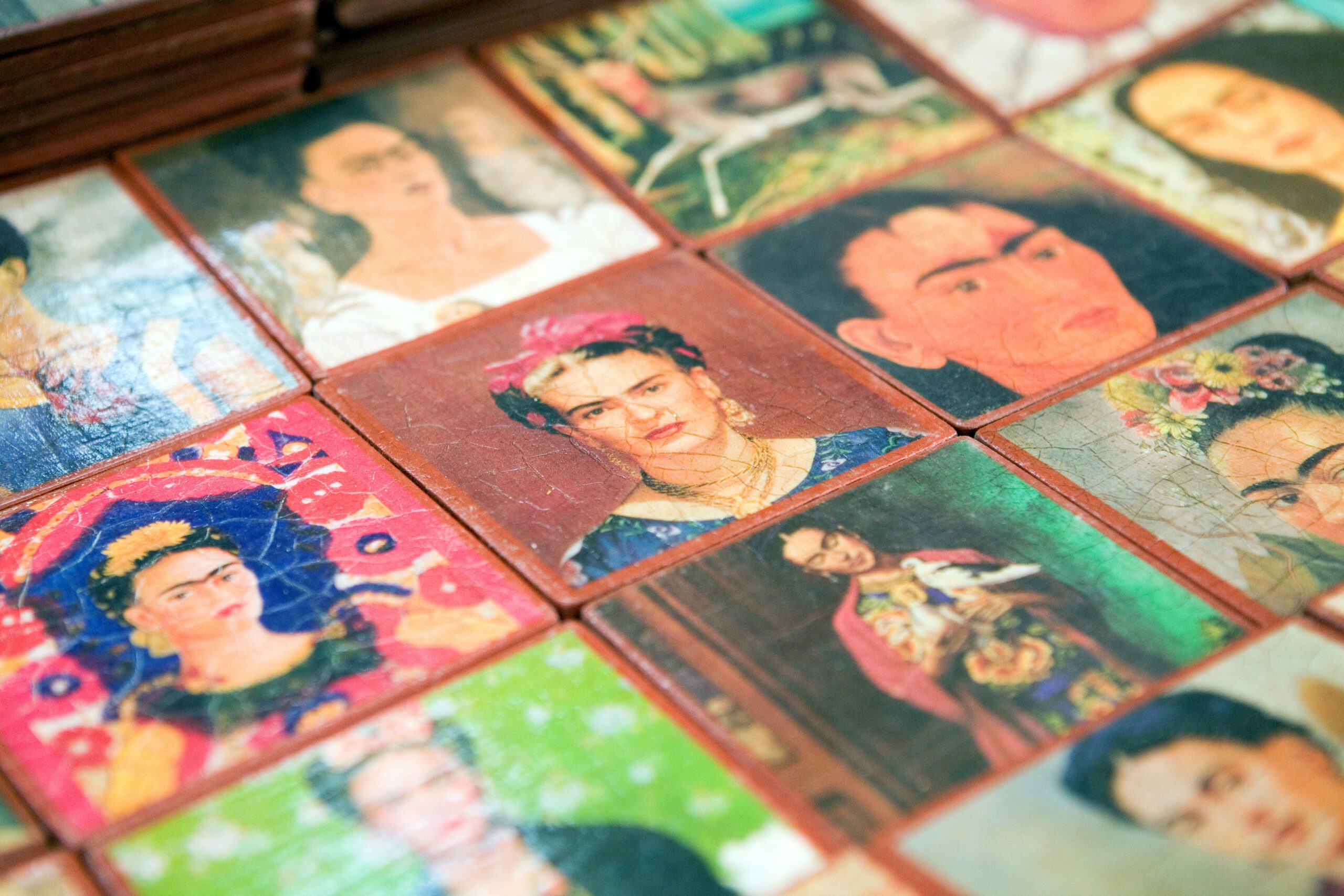
Deciphering a Frida Kahlo Painting
Today we will be transported to the world of Frida Kahlo and decipher the major themes and symbols of her oeuvre.
It is easy to get lost and indulge in the imposter syndrome associated with pursuing a fine art museum. You are hooked into the narratives of the works or by the talent of how realistic the painting may be, then suddenly you are met with something, where you cannot identify any meaning behind it at all? Trying to decipher the hidden messages embedded in contemporary art can be somewhat of a difficult task. Some artwork just needs to be unpacked to uncover the subliminal messages that they are meant to convey. We here at Masterworks, want to make this as seamless as possible so we have created a comprehensive guide to providing a palatable service for visual analysis of some of our favorite artists’ major works.
Common Symbols in Kahlo’s artwork
Frida Kahlo had painted 143 pieces of work – 55 of which were self-portraits. Kahlo’s artwork, particularly her self-portraits, are auto-biographical – each one depicting a moment in her life or political issues in her home country of Mexico. In her paintings are symbols and metaphors that reflect her emotions – her pain, and anguish, even her dark humor. Unashamedly baring her soul through her artwork.
Religion and Animal Symbolism
In the context of religious iconography prevalent in Kahlo’s art, a recurring symbol is the crown of thorns, often seen around her neck or worn on her head. The spikes on the thorn necklace, puncturing her skin and causing her to bleed, hold religious connotations, reflecting on Jesus’ crown of thorns he wore when he was crucified. This could be an expression of the death of her marriage and the pain she had to endure. In death, comes new life and hope for the future and the butterflies are thought to be a symbol of resurrection and rebirth after her divorce. With these two symbols, Kahlo is likening herself to a Christian martyr.
Another animal symbol is the hummingbird. The hummingbird is a symbol of hope and good luck in love in Mexican culture One of the best examples of the use of the Hummingbird in Frida Kahlo’s work is Self-Portrait with Thorn Necklace and Hummingbird’ (1940). However, in this work, the fact that the hummingbird is black, attached to the necklace of thorns and appears lifeless, could be reflective of the desolation Kahlo had felt. Another interpretation is that the hummingbird refers to the Aztec god of war, Huitzilopochtli (whose name translates as ‘Southern Hummingbird’ or ‘Left-handed Hummingbird’), who hurts Kahlo, causing her misery.
We also see religion and animals represented in Kahlo’s work ‘The Wounded Deer (1946) portrays the artist as a deer, active and alert, with its front right leg elevated. The deer has been struck by nine arrows that cause it to bleed from the wounds. The deer is located in a dense forest with a clearing that leads to a body of water.
In 1946, Kahlo had an operation on her spine in the hope that the surgery would cure her of the crippling back pain. The operation failed. ‘The Wounded Deer’ was painted shortly after the surgery.
Portraying herself as the wounded deer is a direct portrayal of her own physical and emotional suffering. The deer’s raised right leg suggests that the animal has been injured in some way. This could be a mirroring of Kahlo’s own impairment.
Numeric Symbolism
Numeric symbolism is present in ‘The Wounded Deer. Specifically the number nine. Nine times have the deer been struck by arrows and nine trees are painted to the left before the clearing. According to the Aztec calendar, Kahlo was born on the ninth day. But more than that, the number nine is a symbol of the nine phases of the underworld, in Aztec culture. Another theory on Kahlo’s reference to the number nine is that nailed to the cross, Jesus Christ finally dies in the ninth hour again referencing the similar emotional experience of having been a martyr in her life.
Mexican Heritage and Nationalism
Frida Kahlo was heavily influenced by the Mexicayotl movement, which was a reaction to the colonialist mindset that native Mexican culture is inferior and that Mexico should emulate Europe. The Mexicayotl movement aimed at protecting the indigenous culture and traditions among the Mexican people.
In most of Kahlo’s self-portraits, she paints herself in traditional indigenous Mexican dress. She wears long, colorful skirts, huipils (loose-fitting tunic), rebozos (shawls), and elaborate headdresses. Painting herself in the Tehuana dress was a chance for Kahlo to express her anti-colonialist ideas and pay homage to her indigenous ancestry.